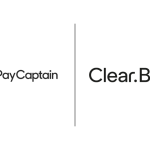
Nexus International, the gaming group founded by Gurhan Kiziloz, reported $546 million in revenue for the first half of 2025, an increase of 110% from a year earlier. The figure puts the company on watch lists across the sector and has prompted a reassessment of a business that has largely grown out of view, with few announcements and little emphasis on external financing.
Kiziloz’s approach has been notable for its sequencing. Executives and advisers familiar with Nexus describe a playbook that prioritises licensing, payments integration and risk controls before marketing spend. That order was visible in Brazil, where the group’s Megaposta brand entered after securing permissions and aligning to domestic rails such as PIX, with identity checks tuned to local requirements. The Brazilian arm generated roughly $400 million in revenue in 2024, providing the company with a stable base at a time when the country’s regime was formalising. Earlier this year, Nexus opened a regional office in São Paulo to support contracting, compliance and operations; the company has not tied the site to specific market-entry announcements.
The rest of the portfolio has been organised to cover different segments of demand. Spartans targets high-frequency users, including those comfortable with digital assets, in markets where regulation allows such rails. Lanistar extends a mobile-first template across multiple jurisdictions. Each brand is ring-fenced at the edge, language, offers and market depth, while sharing a central spine for payments, ledgering, identity orchestration, fraud and disputes. That structure allows improvements in one label (for example, cash-out logic or payout exception handling) to propagate to the others, and it contains the operational impact when a single jurisdiction tightens its rules.
Compliance sits at the centre of the model rather than the periphery. Nexus has invested in tiered know-your-customer flows, country-specific thresholds for affordability and source-of-funds checks, and sanctions screening embedded in the same orchestration layer that handles onboarding. The ledger is designed to produce auditable trails. Where permitted, the payments stack includes stablecoins as one of several routes alongside instant domestic transfers, cards and e-wallets. The company applies the same verification and behavioural risk rules regardless of rail, a point regulators tend to scrutinise.
The immediate question is how far this operating design can travel. In Latin America, where licensing frameworks are evolving, being able to go live quickly after rules are finalised can translate into real share. Outside the region, the competitive field is more mature. Bet365 combines broad market access with deep in-play pricing and established media relationships. Flutter’s FanDuel, DraftKings and BetMGM define the tempo in the United States, where state-by-state execution, promotional sophistication and high acquisition costs pose hurdles for new entrants. In parts of Europe, consolidation, such as FDJ’s acquisition of Kindred, has created larger groups with entrenched playbooks.
Nexus’s counterweights are cost-to-serve and time-to-readiness. By reusing shared services across its brands, the company aims to push unit costs down as volumes rise; by treating licensing as product work, it tries to compress the interval between regulatory clarity and launch. The first-half result suggests those mechanics are starting to show through the income statement, though the company remains some distance from its internal projection of $1.45 billion for the full year. Management has not offered a revised target and has kept external commentary to a minimum.
There are risks that do not yield to engineering. Regulation can tighten faster than product teams can adjust; interpretations of “source of funds” or advertising constraints may differ by ministry and change across election cycles. Banking and processing partners can alter risk posture abruptly. Policy toward crypto rails varies country by country. Nexus’s brand ring-fencing limits exposure from any single change, but cannot eliminate it. A self-funded growth model reduces external pressure to move quickly, yet also limits the capacity to buy share at speed should a land-grab window open.
Observers will watch for three indicators over the next two quarters. First, whether the São Paulo hub shortens the time from rule finalisation to go-live in adjacent markets. Second, whether cross-brand convergence, loyalty, support workflows, payout policies, reduces duplication as volume composes across labels. Third, whether performance during peak events remains stable: pricing that holds under load, cash-out availability during volatility, and withdrawals that clear on time. Those operational details tend to drive retention among high-value users and are closely tracked by regulators.
For now, Nexus’s trajectory is plain enough. Revenue is spread across three labels rather than concentrated in a single promotion or geography, and the operating cadence, licensing, integration, launch, has been consistent with how the group entered Brazil. Kiziloz has kept the company’s governance tight and communications reserved. The result is a business that offers fewer storylines than its peers but more measurable routines: audits pass, funds move, launches occur when the groundwork is complete.
Whether that is sufficient to lift Nexus into the upper ranks of the industry will depend less on a single market than on repeatability. The companies that endure in this sector, large incumbents and regional specialists alike, tend to make reliability unremarkable and compliance predictable. Nexus has arranged itself with that in mind. The first half of 2025 shows the outline of a plan; the second half will test how far it can be scaled.















